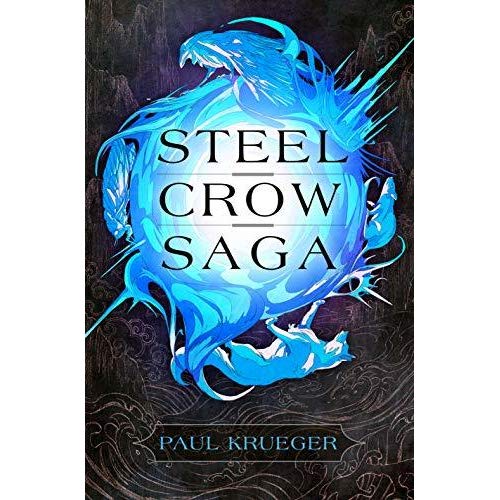Rat. Crow. Dog. Metal. Long ago, the four nations lived in harmo—wait. Something’s off. Oh, right, this is the book Steel Crow Saga by Paul Krueger. And though it rises from a slew of homages, epic fantasy has its own unique charms and presence to warrant committing to its heft and promised future volumes.

There actually are four nations, which are also thinly veiled ciphers for real-world Asian nations: Japan, China, Korea, and the Philippines (plus India on the fringes). The Shang (Chinese) and Sanbu (Filipino) successfully coordinated rebellions against Tomodanese (Japanese) colonization and threw off foreign rule in part because of their willingness to create magical pacts with animals, giving themselves a supernatural edge that enhanced their guerilla tactics.
The Tomodanese do not pact with animals, and decry it as a form of slavery. Instead they pact with metal, temporarily binding their souls to any metal objects they please in order to manipulate the substance any way they wish. It makes for some truly impressive weapons and some really cool worldbuilding: the Tomodanese have, among other things, foreigner-proof cars that only run when engaged with metalpacting.
If that sounds a lot like Avatar: The Last Airbender, you’re not wrong. This feels very much like it was inspired by Korra specifically, since there’s a 1920’s vibe to everything, swords mixed in with guns, automobiles driving next to horses. But there’s not much element bending: magic is far more widely applied to pacts with animals, not elements. That’s because a pact with an animal produces a shade, a creature far more deadly and powerful than its original form that can be summoned and dismissed at will.
People have said it’s like having Pokemon, which is broadly accurate. It’s also a little bit like a daemon from His Dark Materials, since a person’s shade is meant to express their core traits and guide their actions, and they can only have one, not 151. (Or however many there are now. God I’m old.)
I wish the shades had a bit more personality and presence on the page. Characters only use their shades in battle or tricky situations; they don’t walk around with them or enjoy their company, which deprives us of some character insight and also some charm. The casual presence of “animal” companions is what makes Pokemon and His Dark Materials so appealing—it’s companionship, not battle, that really matters to the narratives.
There is an out-and-out villain who took a slightly different part of Pokemon as his inspiration, namely the “gotta catch ’em all” slogan. He possesses multiple shades, which is considered an unspeakable abomination, as it involves splitting the soul (much in the manner of horcruxes, if all the horcruxes were animals instead of just Nagini). This mysterious Splintersoul comes from nowhere and seems to have allegiance no one; all we know is that he has a bone to pick with Iron Prince Jimuro.
Actually, everyone wants to get their hands on Jimuro. Some people want to use him, some people want to protect him, and some people want to kill him. Jimuro himself just wants to get home to help guide the shattered remnants of his country, which went from colonizer to occupied in just a few years.
Even though the backdrop of geopolitical upheaval and anti-colonialism are really good, the focus on Jimuro weakens the plot somewhat. It just doesn’t seem like the stakes are super high, all focused around this one man. If Jimuro dies, then a nation that everyone hates will have to…find a new leader? Be…a bit more screwed than it already is? It doesn’t help that Jimuro is a spoiled, kind of annoying rich kid who has some sense of responsibility but not a ton of compassion or common sense. I’m fine with unlikable characters, but he doesn’t quite have what it takes to be the linchpin of an entire book.
Fortunately, even though the plot centers around Jimuro, the narrative itself is far more decentralized and gives us insight into a number of other characters. Lee was definitely my favorite character, since her street-rat snark was genuinely fun and funny, and her background gave her some quiet pathos. I enjoyed her dynamic with Princess Xiulan, too, the would-be Sherlock Holmes who wanted Lee to be an adoring Watson, but got more of a skeptical (and equally clever) Irene Adler instead.
All the characters, major and minor, had strong and distinct personalities, excellent motivations, and diverse backgrounds and skills. I love it when drama hinges on legitimately competing interests. It’s what GRRM does, and I suspect Krueger has learned from his example. But Krueger has a way with plot and skill with characterization that’s all his own.
This is a fun and fast epic fantasy with some meaningful insight into colonialism and empire. It has elements of a lot of well-loved franchises, but it incorporates them in such a sincere and charming way and with enough original content that the book feels strong and original. In a September absolutely overflowing with new releases and the finales of so many multivolume sagas, this new start to a series is well worth your time.
Steel Crow Saga releases tomorrow, September 24.
